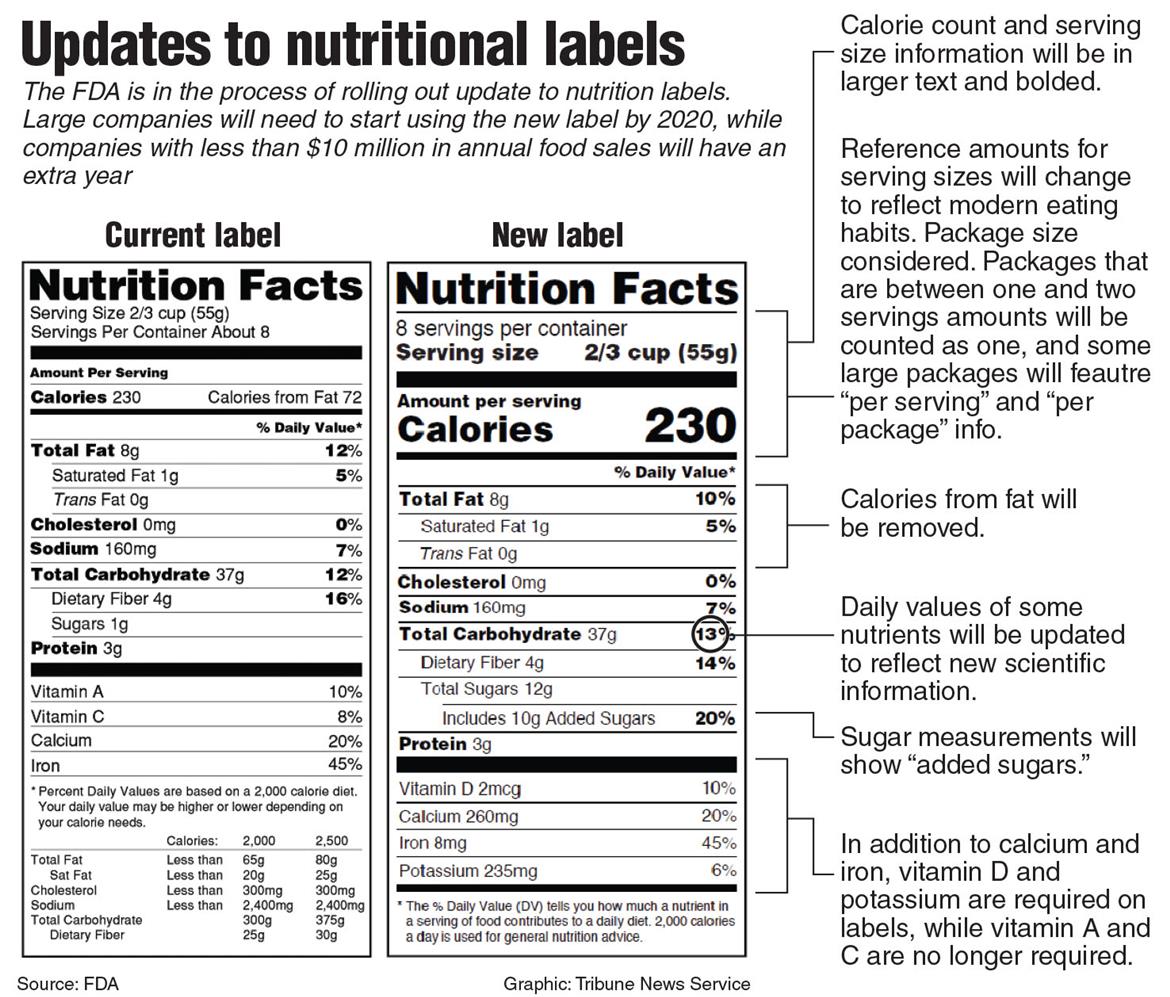What’s the most important information to look for – always, always, always – on a food label? Most people say calories. Others say fat. Sugar is important too, especially added sugar.But what’s the most important information? Serving Size. Everything else is based on that particular amount of food. Let’s say, for instance, I want to compare different brands of ice cream.The US Food and Drug Administration (the folks who recently updated the Nutrition Facts label) has changed some of the standard serving sizes on food labels “to reflect what people actually eat and drink. For example, the serving size for ice cream was previously ½ cup and is now 2/3 cup.”Right. So, back to my example. When comparing ice creams, I need to know that the calories and other nutrients listed on the label are accurate only if I eat two-thirds of a cup.
If twice that much gets accidentally scooped into my bowl, I will chalk up double the calories, fat, sugar, etc – you get the picture.Of course, Calories are important too. So important that the newest Nutrition Facts label now shows calories in big, bold letters. “Calories from fat” is one item that was removed from the newest food label.That’s because research now shows that the amount of fat we consume is less important than the type of fat. And that explains why we still see “Saturated Fat” and “Trans Fat” on this new label; they are the types of fat most associated with inflammatory conditions such as heart disease.
“Added Sugars” has been added to the newest Nutrition Facts label to help us see the difference between those that occur naturally in a food (such as raisins in cereal) and those that are added (such as sugar in cereal).Other sugars in the “Added Sugar” category include syrups, honey and concentrated sugars from fruit or vegetable juices. This information can help us stay within the guidelines to limit our intake of added sugar to no more than 10% of our daily calories.Nutrients on the new label have changed as well. Vitamins A and C have been replaced with vitamin D and potassium, since these nutrients are more apt to be lacking in our diets.Another good addition: We will now see the actual amounts (in milligrams [mg] or microgrammes [mcg]) of nutrients on the label, instead of just the “% Daily Value”.And to help those who wonder what in the heck is the “% Daily Value”, a footnote has been added to the bottom of the Nutrition Facts label to better explain it.In short, “% Daily Value” tells us what percentage of the recommended amount of a nutrient is contained in one serving of a particular food. A three-cup serving of raw spinach, for example, provides 8% of the calcium we need in a day.
By the way, you won’t see the newest Nutrition Facts label on everything for awhile. The deadline for large manufacturers is Jan 1, 2020. Smaller companies have until 2021 to comply, says the FDA. – The Monterey County Herald/Tribune News ServiceBarbara Quinn is a registered dietitian and certified diabetes educator in the United States.
Read more at https://www.star2.com/health/2019/03/04/whats-on-the-new-nutrition-label/#W1W0FueSwMJjsEo9.99

